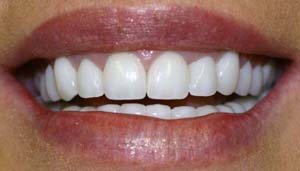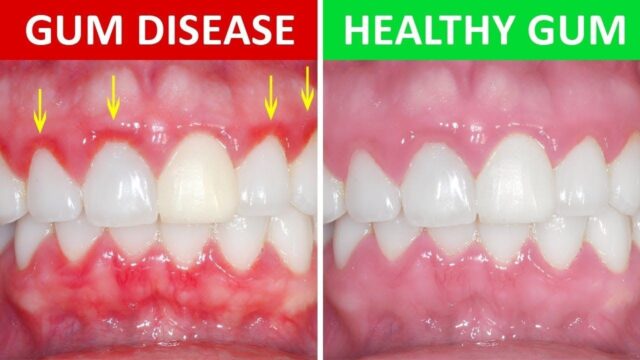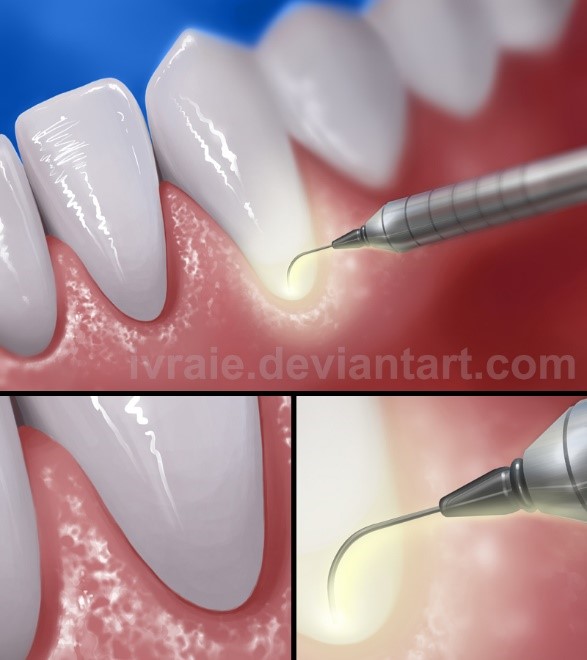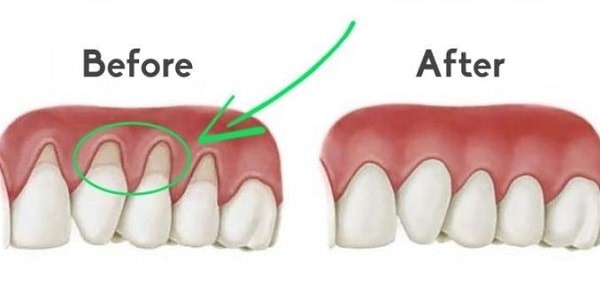At Al Tabeeb Specialist Dental Centre when it comes to having an examination and clean we provide more than just a “check up and clean”.
At Al Tabeeb Specialist Centre, when it comes to having an 'examination and cleaning', we provide more than just a “check up and cleaning”.
Implants are the real deal

Dental implants are the best choice to restore your smile because they look, fit, feel and function like your natural teeth. More importantly, they help keep your mouth healthy for years .
Understanding implants :
The best long-term solution to missing teeth is dental implants. That’s because they become a fixed part of your mouth and allow you to be naturel everyday life—people will never even know you have them. Here’s how they work:
1- Crown
This is the tooth portion of your implant, designed to work as hard as and blend in with your natural teeth.
2 – Implant
This anchor piece integrates securely into your jaw like your natural tooth root, creating a strong bond that improves bone health.
Make it match
 Now that your jaw is healed, it’s time to match your replacement teeth to your existing ones. We’ll start by taking an impression of your current teeth or jaw.
Now that your jaw is healed, it’s time to match your replacement teeth to your existing ones. We’ll start by taking an impression of your current teeth or jaw.
This is the model we’ll use to create crowns, bridges or dentures that are the correct size and shape for your mouth, which is important for maintaining your bite.
Then we move on to color, making sure the shade remains consistent across all of your teeth so you feel total confidence anytime you catch a glimpse of your smile.
Porcelain Crowns
Dental porcelain can be sculpted to closely replicate the look of natural tooth enamel, while providing desirable strength and resilience. Porcelain crowns are an excellent choice when recreating the form and function of a damaged tooth, because a crown basically replaces the entire external portion of the tooth down to the gum level. Crowns are not limited to simply replacing the original tooth, but can be designed to create an even better esthetic appearance.
What Is The Procedure?
Crowns can be selected for necessity or cosmetic reasons. No matter what the case, the first step is to schedule an appointment with your dental professional. The dentist will examine your teeth and in some cases will immediately see that a crown is the best option. In other situations where the problems aren’t so obvious, you may need to express your concerns and discuss your future smile goals so both you and your dentist have all the facts.
What Material Is Used?
Porcelain crowns are free of any nefast metal, that can injure your health. We use the most advanced technology in our technic so the results is the more natural and the longivity is the longest.
Ceramic Dental Bridges
If you have one or more missing teeth and need to be replaced with new ones, ceramic bridge may be the perfect solution for you. At Al Tabeeb Centre we will determine whether the clinic ceramic bridge is suitable for you or not by carrying out a fully detailed evaluation by skilled dentists. A ceramic dental bridges significantly improve the shape of your smile or help you chew food with ease.
Dentures
 If you have lost either all or some of your teeth and need effective replacement with either full or partial dentures, Al Tabeeb Dental Centre can provide you with superior quality dentures that look as natural and life like as possible. There is never any compromise, accurate measurements are taken to ensure a superior fit and level of comfort.
If you have lost either all or some of your teeth and need effective replacement with either full or partial dentures, Al Tabeeb Dental Centre can provide you with superior quality dentures that look as natural and life like as possible. There is never any compromise, accurate measurements are taken to ensure a superior fit and level of comfort.
Although there are several methods to replace missing teeth, some methods such as individual dental implants or bridges may not be suitable in all circumstances or be your desired choice of treatment.
At AlTabeeb Dental Centre we will clearly advise you about every option to replace your missing teeth, your suitability, the pros and cons and the fees involved.
Complete Dentures
Complete dentures replace all missing teeth in either the upper, lower or both jaws. They can be personally styled and designed with your choice of tooth colour, size, shape and position in order to achieve the most a natural and aesthetic result possible.
Implant Dentures
Implant dentures can provide you with the firmest possible fit, stability and support. These are often considered a major advantage when it comes to chewing and talking. They are designed to be as life like and natural as possible. Usually from two to four implants are placed in either the upper or lower jaw by a dental specialist and the denture is designed to securely click onto the implants.
Partial Dentures
Partial dentures are supported by the remaining teeth and gums and can replace either a single tooth or multiple teeth. They are made with either a high quality acrylic base or a thin, yet extremely durable metal base called cobalt chrome. Usually partial dentures have metal clasps that fit around selected teeth to help keep the denture in position. We strive to keep the metal clasps out of view. Alternatively, the clasp can be hidden into customized slots placed inside specially designed crowns. The partial dentures we provide are carefully designed to function and blend-in with the look of your remaining natural teeth so that they are comfortable and as life like as possible.
Your dentures are individually designed to suit your personal needs with a high level of realism and comfort after we thoroughly examine your oral condition.
Porcelain Crowns

Trust AlTabeeb Dental For All Your Porcelain Crown Requirements
Porcelain crowns can be used in many situations to fix teeth in need of structural or cosmetic improvement.
If you have a damaged tooth that is cracked, fractured or severely worn a porcelain crown is often required.
A porcelain crown is also considered if your tooth is badly decayed, has a large broken or lost filling, or has had root canal treatment.
Porcelain crowns are also useful for many cosmetic dental needs. They can be used to fix many aesthetic or cosmetic issues including deep discoloration and large unsightly fillings to make your teeth appear brighter, straighter and more symmetrical. Porcelain crowns can even help you with chewing or speaking concerns that may result if a tooth is damaged.
What Is The Procedure?
After a consultation with our highly skilled dentist at Al Tabeeb Dental Centre your tooth is carefully prepared. Precise impressions and measurements are made to customize the porcelain crown to accurately fit your affected tooth. Our porcelain crowns are meticulously crafted with the highest standards by our long term dental laboratory which provide individual custom shading. The outcome is a beautiful long lasting porcelain crown with a lifelike appearance that blends with your natural teeth and is usually completed in only two visits.
What Material Is Used In Porcelain Crowns That Are Metal Free?
The inside surface of porcelain crowns that are metal free is made of Zirconia. This material is one of the most technologically advanced materials available. The Zirconia is formed into its correct shape with a highly sophisticated milling machine from a scanned computer CAD CAM model of your tooth. Being metal free, Zirconia crowns do not have that all too common black or silver line near the gum and there is no risk of metal allergies. Zirconia is one of the strongest ceramic materials used inside porcelain crowns and will give your tooth a long lasting, lifelike appearance.
Porcelain crowns can dramatically improve the appearance, function and strength of your tooth and help it last lifelong. Porcelain crowns usually last decades with proper care and good oral hygiene.
Porcelain And Zirconia Bridges

If you have one or more missing teeth and need to have it replaced with a new tooth that is permanently fixed in place, a porcelain bridge may be the right solution for you.
AlTabeeb Dental can determine if a porcelain bridge is suitable for you by providing a detailed and thorough assessment with our highly trained and experienced dentists.
Porcelain bridges can dramatically improve the appearance of your smile or help you chew your food with ease. This is because porcelain bridges are often suitable to replace front or back teeth. Porcelain bridges usually last decades with proper care and good oral hygiene.
With the latest technology, porcelain bridges often appear so lifelike that no one can tell!
What Is The Porcelain Bridge Procedure?
After a consultation with our highly skilled Al Tabeeb Centre l dentist the preparation is tailored to suit your individual requirements. Precise impressions and measurements are made to customise the porcelain bridge to accurately bond in position. Our porcelain bridges are meticulously crafted with the highest standards by our dedicated dental laboratory which provide individual custom shading. The outcome is a beautiful long-lasting porcelain bridge with a lifelike appearance that blends with your natural teeth. A porcelain bridge can usually be completed in as little as two appointments over a period of three weeks.
What Material Is Used In Porcelain Bridges That Are Metal Free-zerconia ?
The inside surface of porcelain bridges that are metal free is made of Zirconia. This material is one of the most technologically advanced materials available. The Zirconia is formed into its correct shape with a highly sophisticated milling machine from a scanned computer cad cam model. Being metal free, Zirconia bridges do not have that all too common black or silver line near the gum and there is no risk of metal allergies. Zirconia is one of the strongest ceramic materials used inside porcelain bridges and will give your smile a long-lasting, lifelike appearance.
White Fillings
 Wouldn’t it be excellent if all your fillings could be natural looking white fillings. At AlTabeeb Dental Centre, you will rarely need to have the old style silver amalgam or metal fillings that contain mercury.
Wouldn’t it be excellent if all your fillings could be natural looking white fillings. At AlTabeeb Dental Centre, you will rarely need to have the old style silver amalgam or metal fillings that contain mercury.
Modern white fillings are mercury free and are made from a variety of high quality dental materials. These include porcelain and composite resin.
At AlTabeeb Dental we rarely use metal or silver amalgam fillings.
White fillings are also a much more environment-friendly choice, do not corrode or expand and are often considered to be a healthier option too.
White fillings do not contain any mercury and bond securely to your tooth. Unlike metal or silver fillings, only a minimum amount of tooth preparation is required. The life expectancy of a white filling can vary depending on how heavy the bite comes together and how large the cavity is. We are using modern white fillings that are very durable and often last many years.
If you have a very large cavity or your tooth is fractured, other alternatives such as porcelain crowns or porcelain overlays may be a more suitable alternative. Your Al Tabeeb Dental doctor will always advise you about the most suitable option to restore your tooth.
Now that advanced white fillings have emerged, you no longer need to show unattractive metal or silver amalgam fillings when you talk, laugh or smile.
Braces

Most people aren’t born with a perfect smile. Over time, untreated tooth or jaw misalignment can affect the way you chew and contribute to tooth decay by making it more difficult to remove particles of food from between the teeth.
Our well-qualified Orthodontists can correct a bad bite, create room for erupting teeth, promote healthy jaw growth and improve your smile and your self-esteem using state-of-the-art technology including metal braces, clear ceramic braces, “hidden” braces and transparent aligner technology (Invisalign). We specialise in using orthodontic treatments that minimise discomfort and shorten treatment time.
Our specialist doctors are experienced in a range of orthodontic treatments using fixed or removable braces to straighten your teeth and to give you your best smile. The good news is that braces are better than ever, leading to improved patient comfort and reduced treatment times. There are also more discreet options available.
Why Orthodontics?
Orthodontic treatment is about making the best of your teeth; it’s about improving the harmony of your mouth and jaws. Once you can bite correctly, you can eat more comfortably and care for your teeth and gums more easily, and of course, you will have the smile of your dreams.
Benefits of Orthodontic treatments
You might think that straightening your teeth only has aesthetic benefits, but that couldn’t be farther from the truth. Crooked teeth can be harder to clean, which can lead to tooth decay or periodontal disease. Teeth that don’t fit correctly can make it harder to chew, leading to headaches, shoulder or back pain, and even temporomandibular joint (TMJ) disorders.
How Do Orthodontic Treatments Work?
Orthodontic treatments involve different types of appliances used to retrain muscles, slowly move teeth, and affect your jaw’s growth by placing gentle pressure on your teeth and jaw
Fixed Braces in Al Tabeeb Centre (Clear Ceramic and/or Metal)
Metal brackets, wires, and bands of braces are the mainstay of orthodontic treatment. Your orthodontist may recommend braces for significant orthodontic problems or if you want to close gaps and align your teeth quickly. Today’s high-tech braces wires are less noticeable than the wires of the past, and colorful elastic bands make braces more fun. While braces are most popular among young adolescents, adults also opt for braces to correct their smile as well.
Traditional fixed braces have evolved to be more efficient than ever, with the introduction of low friction self-ligating braces, which use lighter forces to move your teeth. Although similar in look to traditional metal braces, self-ligating braces (such as Damon brackets) feature a small spring clip instead of using small elastic bands to attach the wire to your brace’s brackets, creating less friction and allowing for more efficient tooth movement.
Invisible Braces
Modern orthodontics offer a range of discreet options for patients who may feel self-conscious about wearing braces. Braces today are smaller, more comfortable and more inconspicuous. The introduction of invisible braces in Al Tabeeb Centre marked the beginning of a new era when patients of all ages could have more options to straighten their teeth and have a perfect smile.
Retainers
During orthodontic treatment, your teeth are held in position by your braces, but once they’re removed, stretched elastic fibres in the gum try to pull the teeth back to their original position – something we call “orthodontic relapse”. It takes time for these fibres to remodel and stop pulling on the teeth. Continued growth of the jaws can also encourage the teeth to move once treatment has been completed.
To guarantee that your teeth stay straight after braces it’s important to wear retainers. To help avoid orthodontic relapse we provide our patients with retainers, which hold the teeth in their new position.
Wisdom Teeth

Wisdom teeth, also known as third molars, are the last teeth to push through the gum (erupt) generally between the ages of 18 to 24 years of age. In some patients a wisdom tooth may not have enough space to fit in the mouth properly, this is known as an impacted wisdom tooth.
Although it is possible your wisdom teeth may initially cause no problems, ultimately problems may arise particularly when they only have enough space to partially cut through the gum. This is knows as impacted wisdom teeth.
You may have difficulty opening your mouth or swallowing when a wisdom tooth is causing trouble and the following conditions are common when wisdom teeth are impacted:
Infection
An impacted wisdom tooth may have a flap of gum resting over the top of the tooth. This flap of gum may allow food particles and bacteria to get trapped. This could trap develop into an infection starting around the top of the tooth. Infection and inflammation (swollen red gums) can cause pain, swelling and jaw stiffness.
Crowding
A wisdom tooth may push nearby teeth out of their correct position. This could lead to crowding of front teeth.
Cysts
A cyst is a fluid filled sack that may form around a wisdom tooth. The cyst could damage bone, weaken the jaw or cause problems to other teeth or gums.
Damage To Nearby Molars
An impacted wisdom tooth may keep pushing against the molars next to it. This could lead to damage of other teeth.
Of course no one wants their wisdom teeth removed unless it’s necessary. We are very conservative about any tooth removal and ensure that an X-ray (OPG) is taken before the final decision is made to remove them or not.
If one or more of your wisdom teeth need removal we offer every option available to make it the most comfortable experience possible. This includes dental sedation or referral to an excellent specialist oral surgeon if a general anaesthetic is required.
An infected wisdom tooth can cause serious medical problems. Therefore, it is important to contact us straight away to make an appointment for an assessment. During this appointment we may need to gently cleanse away the infection around your wisdom tooth. Often pain killers and/or antibiotics are prescribed to help alleviate the pain and infection the wisdom tooth may be causing well before it is actually removed.
Extraction
 Al Tabeeb Dental Centre are extremely gentle if you need tooth extraction. However, we never extract teeth unless it is absolutely necessary or it is an extreme situation beyond repair. We thoroughly assess all other options first and the reasons why you may require an extraction.
Al Tabeeb Dental Centre are extremely gentle if you need tooth extraction. However, we never extract teeth unless it is absolutely necessary or it is an extreme situation beyond repair. We thoroughly assess all other options first and the reasons why you may require an extraction.
Fortunately with the advent of advanced technology, teeth that were once considered impossible to save can often be effectively treated. Many teeth with very complex problems can now be saved with treatments such as root canal treatment, porcelain crowns or periodontal (gum) treatment.
There Are Times, However When Tooth Extraction May Be Essential Such As:
- Wisdom tooth problems.
- Severe decay, trauma or bone loss around your tooth.
- Baby teeth that won’t naturally fall out and block the adult tooth from coming through.
- Orthodontic treatment (braces or Invisalign) but only in limited cases after all other options are considered.
Often, it is important to replace the extracted tooth to help avoid other complications or aesthetic concerns. Nearby teeth may drift and lead to chewing difficulties, jaw joint pain, food trapping, decay or gum disease. Some of these complications could also lead to further tooth loss.
If your extracted tooth needs replacement, we will explain all options with you in order to give you the best possible outcome. Several options are considered such as Dental implants, bridges or occasionally partial or full dentures.
We always consider extractions as the last resort. However, if it is essential, we ensure the extraction procedure is safe and as comfortable as possible. Highly effective numbing cream and virtually painless injections are used to help take away the pain, fear and anxiety often associated with dental extractions. Dental sedation also known as twilight sleep sedation, relaxant medication or referral to specialist for a general anaesthetic is also available.
Gum Treatment

There are two major stages of periodontal disease: gingivitis and periodontitis. The earlier stage, gingivitis, is a mild form of gum disease caused by plaque build-up around the gum line which causes inflammation of the gums. If you neglect to brush or floss your teeth daily, this plaque build-up will trap bacteria and cause gum disease. Your gums will appear red and swollen, and you could experience bleeding when you brush or floss. If properly treated, it may be reversed.
Left untreated, gingivitis turns into periodontitis. During this more destructive disease stage, the supporting bones and fibres that hold your teeth in place have been irreversibly damaged, as bacteria penetrate the deeper pockets of tissue. Immediate treatment is necessary to prevent further damage and tooth loss.
Gum disease usually progresses slowly and painlessly, meaning it can take years for sufferers to realise there is a problem – but it is easier to treat when it’s caught early.
The best way to avoid or manage gum disease is by practising good oral hygiene and visiting your dentist regularly.

Why do some people suffer from this problem and not others?
Around 15% of the population is susceptible. 3 major factors are thought to be responsible: family history, stress and smoking. Stopping smoking is an important part of reducing the risk of developing the disease. Certain general diseases such as diabetes may also make an individual more susceptible.
What are some risk factors?
You may be at risk for gum disease if any of the following apply to you:
- Tobacco and alcohol use
- Systematic diseases (such as diabetes, heart disease, osteoporosis, cancer)
- Genetics
- Pregnancy
- Stress
- Certain drugs
- Non-surgical Treatments
- Scaling and Root Planing.
- The early stages of gum disease may only require non-surgical treatment. The most well-known type of non-surgical treatment is known as scaling and root planning, a minor procedure involves careful removal of plaque and tartar from the affected gums, and smooth the tooth root to remove any bacterial toxins. During this procedure, the dentist will remove harmful bacteria and irritants from deep beneath your gums to prevent plaque from accumulating again. Most patients will not need any further treatment, although we recommend visiting our hygienists regularly to maintain your oral health.

- Laser Gum Treatment
An innovative technology that can assist non-surgical treatments for gum disease, laser dentistry involves treating the gingival pocket with a narrow, intense beam of light energy at a wavelength that is ideally suited for soft tissue procedures. This light energy removes a tiny amount of diseased tissue, decontaminates any gum pockets and aides in reducing the bacteria associated with the disease.
- Surgical Treatments
- Pocket Depth Reduction
- Periodontal disease damages the gum tissues and bones supporting the tooth, leaving open spaces around the teeth known as ‘pockets’. The larger these pockets are, the easier it is for bacteria to collect inside them, causing more bone and tissue loss. Without treatment, the supportive structure degrades to the point that the tooth either falls out or needs to be removed.
- We can avoid this with a minor procedure to take the harmful bacteria out of these pockets. We fold back the gum tissue, remove the bacteria hiding underneath, as well as the hardened plaque and tartar that have collected. We then secure the gum tissue back in place. We also smooth any irregular surfaces of the damaged bone to limit the areas where bacteria can live, making it easier for your gums to reattach to healthy bone.
- Gum Grafts
- Periodontal disease can cause your gums to recede, exposing the roots of your teeth. As teeth are supposed to be protected by the gum line, when they are exposed, they can be very sensitive and susceptible to decay. Exposed roots can also make your teeth appear longer and have an ageing effect on your appearance.
Gum graft surgery involves taking gum tissue from another part of your mouth – usually your palate – and using it to cover the exposed root, restoring the gum line to its original, healthy location. This can protect the root from decay, lower sensitivity, reduce further recession and bone loss – and make your smile appear more youthful.

- Crown Lengthening
- Gum disease can seriously damage your teeth – but if a tooth is decayed, broken below the gum line or too short, it may not be possible to affix a crown or bridge to restore it. In this case, dental crown lengthening can adjust the gum and bone level, making restoration possible.
- Ridge Augmentation
- Ridge augmentation is a common procedure performed to help recreate the natural contour of the gums. Often, after a tooth is removed, your jawbone no longer needs to support it and will naturally begin to deteriorate and recede. The height and width of the socket, which was supported by the tooth, will begin to shrink after the tooth is removed. This can lead to a gum indentation developing where the tooth used to be.
- Ridge augmentation is a simple procedure that regenerates jaw bone and tissue, to re-establish your natural gum line, giving you an enhanced quality of life and giving you back your beautiful smile.
- Maintenance
- Plaque, a sticky film, continuously forms on tooth surfaces. Once your periodontal treatment has been completed, we recommend you book periodontal cleanings by a dentist regularly.

The anxiety that many patients experience when receiving dental care is significantly reduced when treated in a familiar environment. Our office-based sedation service make dentistry more accessible and affordable, while offering patients the convenience of receiving comprehensive dental care in their own dental clinic at at Al Tabeeb Specialist Centre.
Dental sedation has helped bridge the gap that existed between patients and dentists unable to overcome barriers to patient fear and anxiety. Pediatric patients no longer need to experience the numerous, often-traumatizing visits needed for dental treatment. Patients with special needs can now have comprehensive dental care in one visit. Any dental phobia at all -needles, drills, sounds, gag reflex – no longer stands in the way of obtaining necessary dental care.
Benefits of Sedative Dentistry
There are numerous benefits of sedative dentistry, including:
- Safety: When you undergo sedation at the dentist, you will not be completely unconscious, as you would be under anesthetics. You will simply be in a deeply relaxed state.
- Lowers anxiety: When you are in a deeply relaxed, sedative state, hour-long operations will feel like only minutes have passed. Going into dental procedures knowing that the process is going to feel much shorter than it actually is can help lower anxiety. And for most sedation, anxiety-inducing tools like needles or intravenous tubes are unnecessary. The lessened anxiety may help you to feel encouraged to continue with regular dental appointments and avoid further issues down the line.
- Flexible: There are many sedation options, and they can last anywhere from 2-6 hours depending on the type of sedation.
- Quick: Using sedation helps to cut down on the number of visits you will need, as more dental work can be accomplished when patients are under sedation. Dentists are also able to complete procedures quicker when they do not have to adjust to the patient’s movements or reactions.
- Great for special needs: For anyone with processing disorders or other disorders that impair the nervous system, sedative dentistry can be a good option. Individuals with these disorders feel very uncomfortable and highly sensitive in dental settings, so the sedative will create a relaxed and quick experience for them.
What to Expect Before and After Your Procedure
There are a number of things you can expect before and after your sedative dentistry procedure. Before your treatment, you will have a consultation with the dentist to discuss your medical history as well as your lifestyle to determine which sedation method and dosage may work best for you.
Here are some general guidelines to follow right before your procedure:
- Do not use drugs or drink alcohol.
- Follow your specific instructions from your dentist on how to properly prepare.
- Wear comfortable clothes to the appointment.
After the procedure, you may or may not feel residual effects from the sedative and/or side effects. Some post-procedure tips to keep in mind include:
- Have another responsible adult take you home, as you will likely feel drowsy.
- Eat and drink normally to help you return to your normal state, but avoid dairy at first, as it may upset your stomach. Go by how you feel in order to determine how quickly or slowly you can return to your normal eating habits.
- Stay hydrated by drinking lots of fluids.
- Avoid scheduling anything else on the day of the procedure so that you have plenty of time to rest and recuperate.
- Do not smoke or drink alcohol for 24 hours post-procedure.
- Take your time, as the drowsiness will make you move slower and be more prone to dizziness.
At Al Tabeeb Specialist Dental Centre when it comes to having an examination and clean we provide more than just a “check up and clean”.
